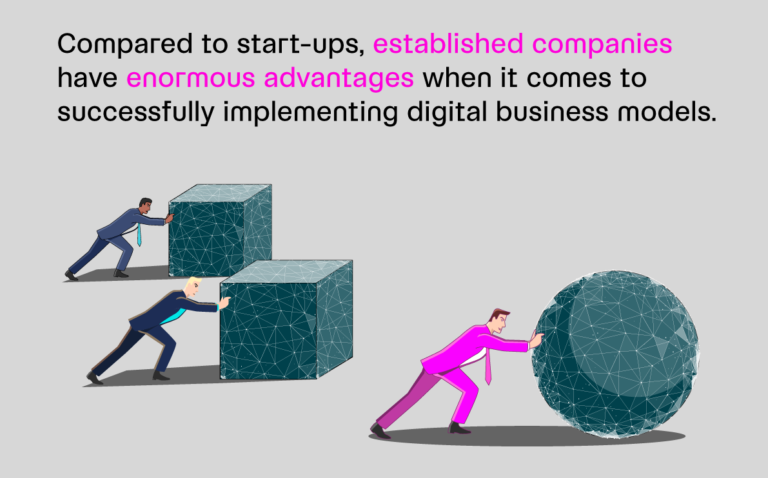What did businesses even do before software? Great software makes quick work of tasks that would have been cumbersome, fallible, or even impossible in the age before computers. Cloud-based software makes it even easier, essential tools accessible from any computer with a secure internet connection.
Best of all, scalable SaaS solutions make the gap between idea and implementation easier than ever. With a few startup software tools, an infant enterprise can be up and running in record time for an absurdly affordable price.
Many business functions have multiple competitor software hashing it out for market share, but SaaS has been around long enough that we’re ready to declare some winners in the startup tools race. Here are the six software tools every startup founder needs …
1. Productivity—Google G Suite
It’s the elephant in the room, and you can’t ignore it because it’s just too good. Microsoft Outlook fought the good fight, but as Cloud services became the rule and not the exception, Google G-Suite became our shared destiny.
There’s a reason Gmail has amassed 1.2 billion users worldwide since it launched in 2004—it’s the most intuitive and reliable webmail platform. G Suite allows you to customize gmail accounts to a branded domain name. With that Gmail account comes cross-compatibility with a host of intelligent G Suite apps, including but not limited to:
- Google Calendar, which integrates with everything.
- Google Drive with sub apps Google Docs, Google Sheets, and Google Slides as a cloud-based alternative to Microsoft Office.
- Google Keep, a Cloud-based notepad.
- Google Hangouts, an easy-to-use teleconferencing app.
The Google Cloud is one of the most stable in the world, with a record of 99.9% uptime. It’s also extremely affordable and, most importantly, leads the market in security, compliant with ISO 27001, HIPAA, and more. This makes it easily one of the best SaaS tools for startups. The competition doesn’t even come close.
2. Team Communication—Slack
Instant messaging was obviously not new when Slack came along, but Slack changed the game and now it owns the space. This end-to-end chat tool allows direct one-on-one messaging, as well as team and group chats, company-wide chats, and “channels” for discussions on specific topics, making it one of the best startup tools for team communication.
Whether team members are communicating with each other from across the office or across oceans, Slack beats the competition in terms of UI. Best of all, unlike other communication tools designed for the workplace, admins can’t read private DM conversations without direct permissions, allowing for privacy, autonomy, empowerment, and trust.
But Slack is more than just a chat app. It can also be used to share files and easily create a searchable knowledge base or cloud-based filing cabinet for collaboration.
3. Project Management—Asana
Google G Suite and Slack provide startups and established companies alike with powerful Cloud services for communication and collaboration. Asana is something different. In a real way, Asana is the office.
Teams scattered across the globe can log into an Asana workspace and assign tasks to team members, discover tasks assigned to them, and keep track of the progress of tasks assigned to themselves and others. Especially for new companies that choose to embrace the remote-work model, Asana is one of the best SaaS tools for startups out there.
Project management in Asana comes in the form of columns and cards. Columns can be created for any number of categories (i.e. “To Do,” “In Progress,” “For Review,” etc.) Team members can create “Cards” in each column, and move them between columns as needed. Cards can be:
- Assigned to team members.
- Assigned due dates.
- Given category labels.
- Given checklists.
- Preserve a chain of comments.
- Receive file attachments.
Asana, effectively, becomes the organized “to-do” list of your entire organization. It also integrates with more apps than almost any other Cloud-based project management app, including G Suite, Hubspot, and WordPress.
4. Marketing Analytics—Google Analytics
For most startups, the website is the hub of customer activity. Without marketing analytics in place, it’s impossible to know how well (or poorly) the website is doing its job. How many people are visiting? How long are they staying on the page? Which pages are they spending the most time on? How many visitors convert to sales or leads?
Again, Google leads the pack with a free suite of marketing analytics tools—code snippets you embed into your website to track visitor behavior at four separate levels:
- User: actions performed by each unique visitor.
- Session: actions take on each unique visit.
- Pageview: each page visited.
- Event: link click, video view, etc.
By gathering data on user behavior, businesses can gain valuable insights about customer wants, needs, and behaviors that they can apply to their marketing strategy, as well as uncover weaknesses to shore up and reclaim lost customers. Google Analytics is one of the most critical startup tools to track customer interactions in the crucial early days of operations.
5. Marketing—Hubspot CRM
“CRM” is short for “customer relationship management.” No business relationship is more important, especially to a startup, than a company’s relationship with its customers. There’s no excuse for managing those relationships in a slipshod manner—especially since Hubspot exists.
Hubspot earns its name by acting as a “hub” for all your marketing and lead collection assets, which—let’s face it—can get overwhelming. There’s your landing pages, your contact forms, your email, your blog, your social media assets … Hubspot interacts with them all to collect leads in the most comprehensive, user-friendly marketing platform in the Cloud, making it one of the most useful startup software tools for a new company.
Once collected as a lead, Hubspot tracks every interaction the customer has with the business, automating the process of tailored upsells. Hubspot also beats the competition in being infinitely customizable, easy to tailor to your business.
6. Landing Page—Wordpress
35% of all websites, 20% of self-hosted websites, and almost 15% of the top websites in the world are built on WordPress, the granddaddy of Cloud-based web publishing apps.
There are lots of easy, drag-and-drop landing page builders out there, but none of them compete with WordPress in terms of:
- Stability. WordPress is unrivaled in its uptime, reliability, and support.
- Customizability. Any design you can dream up can be designed in WordPress.
- Integration. WordPress is compatible with G Suite, Hubspot, Google Analytics, and more with easy integrations.
Even if you’re not a WordPress developer, many WordPress landing page plugins, like Beaver Builder, Leadpages, or Elementor, make it as easy and fast to design a landing page as with a drag-and-drop builder. If your startup’s website is built on WordPress, using it for landing pages is even more of a no-brainer.
Final words
Every one of these startup software tools has competitors. Many competitors have their ardent defenders and adherents. But if you have the luxury of starting from scratch and want the best of the best SaaS tools for startups, these six tools are what you want.
At Venture Leap, we help entrepreneurial teams build and launch their digital products. Get in touch or book a free session below if you want to know how can take your idea to the next step and develop a minimum viable product that works.

Dr. Daniel Werner –
Co-Founder Venture Leap
Let’s talk about your project!
At Venture Leap, we help entrepreneurs realize their vision – Let’s chat about how you can go from an idea to a marketable MVP in 3 months!




